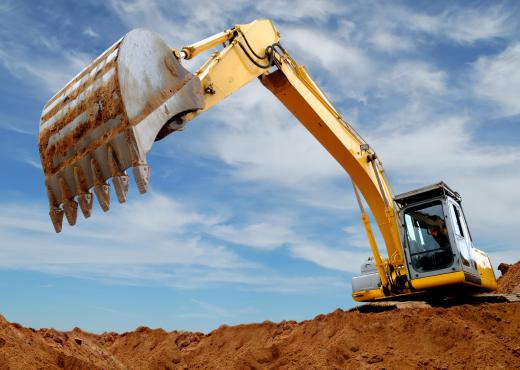Grab buckets are devices that are sometimes employed in construction and excavation projects. While there are smaller models that can be operated by hand, a grab bucket is usually situated on a crane and is used to move large amounts of dirt and debris with relative ease. Tools of this type are usually classified as heavy equipment, and require some training before use.
The design of the grab bucket is relatively simple. The bucket itself is divided into two equal halves that are connected with hinges. The two sections are opened and closed with the aid of hydraulic mechanisms that make it easy to operate the device. Most buckets of this type have a series of teeth along the interior edges where the two halves meet. The overall appearance is almost like that of a human jaw that opens and closes.

In many cases, the grab bucket is attached to a crane, with the aid of strong cables. This design makes it easy to move the bucket into position and lower it to the proper level. Once in position, the two halves are opened and placed around the dirt or debris that must be cleared from the area. The jaws close around the debris, then the bucket is lifted and the crane moved to a location where the contents of the grab bucket can be deposited.

Some designs for the grab bucket crane include controls that not only allow the bucket to close around debris at ground level, but also to dig into the ground. This design is especially helpful with excavations, such as clearing and leveling land in preparation for a highway or even a building foundation. Some cranes equipped with the buckets can also swing in a complete circle, making it easy to collect a load, then swing over an open truck bed and deposit the contents of the bucket without the need to actually move the base of the crane at all.
A grab bucket is often used for cleanup after some type of natural disaster. Because the tool can scoop up any type of debris, it is ideal for clearing away remnants of homes destroyed during a tornado or clearing roadways of fallen trees after a hurricane or flood. Many municipalities maintain access to a grab bucket for use in disaster recovery operations, with the bucket utilized for general cleanup at other times. However, a growing trend among some city and town governments is to contract with construction companies that already own the equipment, calling upon them when and as needed.

